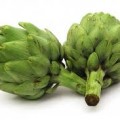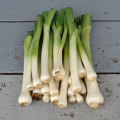Easy-to-grow marigolds attract pollinators and other beneficial insects, and perhaps thwart some pests, while adding bright spots of color to your vegetable garden. Shouldn’t be planted near any legumes.
Botanical Information
Taxonomy
- Family: Sunflower Family, Asteraceae
- Genus: Tagetes
- Species:
- T. erecta (African marigold)
- T. patula (French marigold)
History
Native to North and South America, but have become naturalized world-wide.
Physical Description
- Growth Habit: small bush
- Height: Vary in size from 4 in. to 7 ft. high, depending on the species
- African marigolds: 36″ to 48″ tall
- Leaves: green pinnate leaves
- Flowers: typically 1/2″ to 2″ wide, with either ray or disc florets (see below for colors available)
- Most are annuals
Varieties & Cultivars
Categories or Types of Marigolds
- African marigold: T. erecta
- French marigold: T. patula
- single or double petals, some with stripes of color
- best choice for butterfly gardens
- Signet marigolds: hybrids derived from T. tenuifolia; sometimes referred to as T. signata
- Dwarf variety (8-12″)
- many tiny flowers
- citrus-scented foliage
- blooms well into fall (not day-length sensitive)
- Mountain marigold: T. lemmonii
- native to southern Arizonia canyons
- attracts butterflies
- not pretty-smelling…and strong
- T. minuta are used for cooking or oil production, and are considered invasive in some regions
- Mexican Tarragon: T. lucida
- not considered a marigold, but is in the marigold family
Colors Available
- golden
- yellow
- orange
- red
- white
- maroon
Varieties
Growth Requirements
Climate & Temperature Requirements
Air Temperature
Soil Temperature
Humidity
Day Length or Light Requirements
Site Conditions Favored
Soil Requirements
Soil Texture
pH
Nutrient Requirements
Propagation
Methods of propagation
Seed
Division
Cuttings
Transplanting or Potting Up
Seed Saving
Planting Out
Bed Prep & Soil Amendments
Bed Spacing
Row Spacing
Planting Depth
Alternative Bed Methods
Container Gardening
Routine Cultivation & Maintenance
Water Requirements
Fertilization Recommendations
Mulching & Weeding
Pinching or Pruning & Dividing
Support
Winterizing
Companion Planting
Helpful Companions
Harmful Companions
Due to antibacterial thiophenes exuded by the roots, Tagetes should not be planted near any legume crop.
Companion to..
Pests, Diseases & Problems
Common Pests
Common Diseases
Symptoms
Whole Plant
Leaves
Stem/Trunk
Flowers
Fruit
Roots
Harvesting & Storage
Edible Parts of the Plant
Yield
Days to Harvest / Harvest Timing
Harvest Methods
Storage of harvest
Fresh
Canned
Frozen
Pickled
Dried
Cooking
Nutritional Benefits & Values
Toxicity
Cooking
Preparation
Cooking Methods
Recipes (link to …/category/recipes/tag/[plantname])
Resources
Information for this article was taken from these sources. (link to …/category/resources/tag/[plantname])



